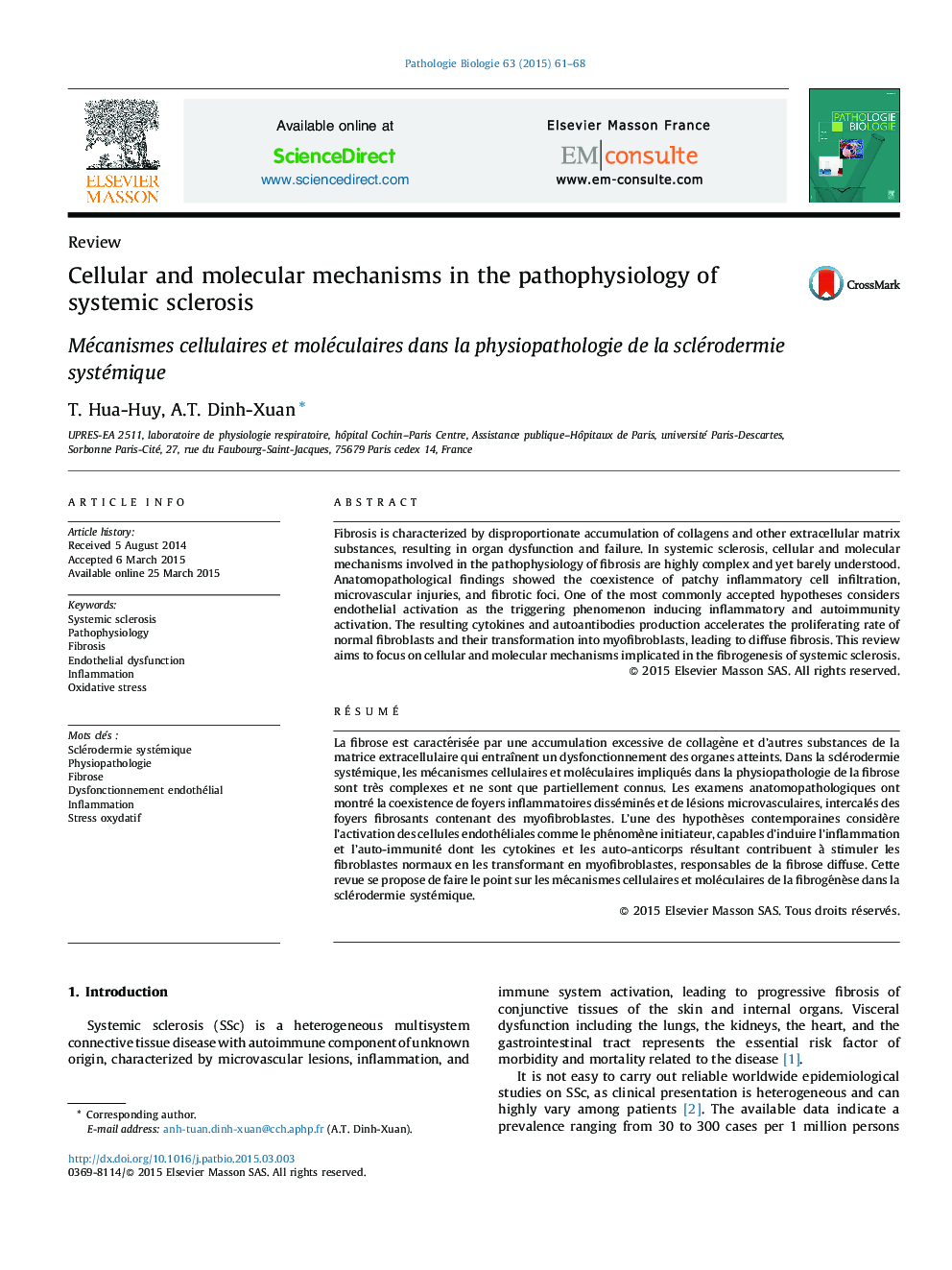| کد مقاله | کد نشریه | سال انتشار | مقاله انگلیسی | نسخه تمام متن |
|---|---|---|---|---|
| 4135873 | 1271880 | 2015 | 8 صفحه PDF | دانلود رایگان |
▶ Microvascular injuries, inflammatory cells, and fibrotic foci were well described. ▶ Endothelial activation induces inflammatory and autoimmunity activation. ▶ Cytokines and autoantibodies stimulate fibroblast proliferation and transformation. ▶ Oxidative stress via ROS formation plays a crucial role in fibroblast activation. ▶ Understanding of many signaling pathways paves the way to individualized treatment.
Fibrosis is characterized by disproportionate accumulation of collagens and other extracellular matrix substances, resulting in organ dysfunction and failure. In systemic sclerosis, cellular and molecular mechanisms involved in the pathophysiology of fibrosis are highly complex and yet barely understood. Anatomopathological findings showed the coexistence of patchy inflammatory cell infiltration, microvascular injuries, and fibrotic foci. One of the most commonly accepted hypotheses considers endothelial activation as the triggering phenomenon inducing inflammatory and autoimmunity activation. The resulting cytokines and autoantibodies production accelerates the proliferating rate of normal fibroblasts and their transformation into myofibroblasts, leading to diffuse fibrosis. This review aims to focus on cellular and molecular mechanisms implicated in the fibrogenesis of systemic sclerosis.
RésuméLa fibrose est caractérisée par une accumulation excessive de collagène et d’autres substances de la matrice extracellulaire qui entraînent un dysfonctionnement des organes atteints. Dans la sclérodermie systémique, les mécanismes cellulaires et moléculaires impliqués dans la physiopathologie de la fibrose sont très complexes et ne sont que partiellement connus. Les examens anatomopathologiques ont montré la coexistence de foyers inflammatoires disséminés et de lésions microvasculaires, intercalés des foyers fibrosants contenant des myofibroblastes. L’une des hypothèses contemporaines considère l’activation des cellules endothéliales comme le phénomène initiateur, capables d’induire l’inflammation et l’auto-immunité dont les cytokines et les auto-anticorps résultant contribuent à stimuler les fibroblastes normaux en les transformant en myofibroblastes, responsables de la fibrose diffuse. Cette revue se propose de faire le point sur les mécanismes cellulaires et moléculaires de la fibrogénèse dans la sclérodermie systémique.
Journal: Pathologie Biologie - Volume 63, Issue 2, April 2015, Pages 61–68
